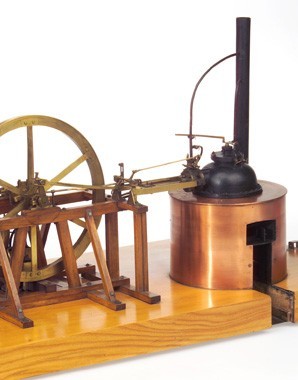Coal instead of wood – Coal as an alternative supplier of energy
While private consumers were reluctant to use coal, the ‘new’ source of energy, it was being used more and more in the blast furnaces of industrial enterprises – however, it was some time before the first steam engine arrived in the Habsburg Monarchy.
It was Vienna, the capital and imperial residence, that was the place with the highest consumption of wood in the Monarchy, and the city’s demand for energy showed a steady increase.
Towards the end of the century the Viennese were using twice as much wood as they had done in 1760. Because the surrounding forests (those along the Danube and the Vienna Woods) could no longer meet the increasing demand, at the end of the eighteenth century wood was transported to Vienna on the Danube and its tributaries from as far away as the Bohemian Forest and forests in Bavaria.
What the state authorities planned was to replace wood by coal. Although most of Austria’s coal deposits were known by around 1790, this raw material was not widely used. The fireplaces were not suitable for burning coal, transport costs were relatively high, and, last but not least, consumers were sceptical about the new source of energy. In 1791 a company, the Wiener Neustädter Steinkohlegesellschaft, was founded in order to exploit the coalfields south of Vienna. However, all that it ‘achieved’ was to build a canal from Vienna to Wiener Neustadt, which in practice was much more important for transporting wood than for moving coal.
In industrial enterprises, which also needed more and more energy, attempts were made to rationalize the use of firewood. New charcoal-burning techniques allowed savings of around fifteen per cent in the consumption of wood, while the amount of coal used in blast furnaces could also be reduced. Significantly, the first use of Watt’s coal-powered steam engine in the Habsburg Monarchy was not in an industrial enterprise but in the gardens of Esterházy Palace in Eisenstadt, where it pumped water for the fountains. Its first industrial use was in a factory for high-quality textiles in Brno in 1816. Ten years later it was eventually used for the first time in the alpine regions in the copper plant at Hirtenberg in Lower Austria.















